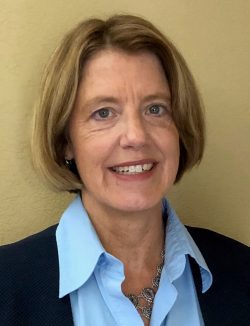What Is a Center of Excellence and How Can It Impact Workers’ Compensation?

The health care industry knows Centers of Excellence have top results, particularly for the most vulnerable of patients.
Centers of excellence are in every corner of the health care field — neurology, cardiology, rehabilitation and more. These centers are considered the top-tier medical facilities in the country, turning catastrophes into results.
So why aren’t workers’ compensation programs investing in these facilities more?
“Workers’ comp doesn’t have much access to centers of excellence,” explained Bijan Bijarchi, vice president, corporate accounts, York Risk. “The providers at these facilities tend to shy away from workers’ comp patients because of the reporting requirements.”
A lot goes into care management for an injured worker, after all. For complex cases, the added communication and paperwork needed for workers’ comp can pull providers away from the patients who need them most. Workers’ comp regulations vary from state to state, as well, adding regulatory hurdles to jump.
On the other end, centers of excellence are top-tier treatment facilities with top-tier prices. Not all workers’ comp fee schedules are willing, or are capable, of covering the costs.
But, Bijarchi said, there is a way to make this partnership work.
What Is a Center of Excellence?
According to Ann Perkins, COO, R&Q Health, there is no one set definition of a center of excellence.
But, “one way to look at them is as a center engaged in research. These centers are making contributions to patient health and health care at large. Typically, they treat a large number of patients with the same injury and the results are published and benchmarked with other similar centers,” she said.
In other words, a center of excellence is a team or facility that provides leadership, best practices, research, support and/or training in a specific area, like addiction, spinal cord injuries, heart-related illnesses and the like.
They are considered an integrated, innovative and seamless experience for the patient, both in terms of treatment and customer service, and outcomes are often positive.
Perkins, along with Bijarchi and Kris Sallee, the workers’ compensation claims manager for American Airlines, will be discussing in detail what centers of excellence can do during the National Workers’ Compensation and Disability Conference & Expo in Las Vegas this fall.
During the session, the speakers hope to demonstrate how risk managers and claim administrators are working with medical centers of excellence to provide a holistic treatment approach for occupational injuries. According to their data, these collaborations are already having success rates of up to 90%.
“Centers of excellence are a different way of looking at treatment,” said Bijarchi. “We want to help demonstrate to our industry peers that we view claims as more than just ‘an injured worker receiving medical treatment’ without considering all of the other factors in that person’s environment, particularly when the treatment plan doesn’t appear to be progressing successfully.”
“These centers are like a one-stop-shop for all modalities,” added Sallee. “They help the [injured worker] regain their life to the best of their abilities.”
The Road So Far
“Finding a way to access these facilities for workers’ comp has been a unique challenge,” said Bijarchi.

Ann Perkins, COO, R&Q Health
Because centers of excellence are considered the best of the best, they are already in high demand for patients outside the workers’ comp space. An injured worker brings more than just an injury with them, and center providers know that.
“Sometimes a workers’ comp case has disputes over nature and extent, or even causation of injury, which can limit treatment options for an injured worker. Additionally, WC billing has to go through special handling. There’s a fee schedule with more stringent reimbursement,” said Perkins.
At R&Q Health, Perkins and her team are working to overcome these challenges for workers’ comp.
“We’re removing the friction in getting claims authorized. We help get the billing in order for the provider, so that we are delivering a fully-authorized patient from day one,” she explained.
“The provider doesn’t have to worry about specialized documents or pay plans.”
Their efforts are breaking down the barrier between the workers’ comp system and the care promised at centers of excellence. On the workers’ comp side, Sallee said additional efforts are in the works.
“Workers’ comp professionals believe these centers are only for unique claims,” she said. But attitudes are changing: “It has been a slow-moving process, but folks are understanding the money spent is cost effective. Centers of Excellence could keep many people off the SSDI payroll.”
York and R&Q Health have partnered together to make centers a viable option for their clients. Many are finding increased success and improved claims outcomes by working with centers of excellence to deliver quality health care to injured workers.
Their hope is to use these centers to continue to help with some of the top concerns in workers’ comp, including the opioid epidemic.
Birjachi said access to inpatient rehab for workers’ comp patients could be life-changing for employee and employer alike.
“When we think differently about a claim and we’re not afraid to try something different, we can get results,” he said. “It’s time to confront the blockades to treatment progression, particularly as it concerns the opioid problem and functional restoration, and work toward having a disciplined approach towards identifying opportunities to improve outcomes.”
For now, as awareness grows about these centers, Sallee added some particularly good advice for workers’ comp professionals: “Don’t just think a high-dollar, difficult claim is what it is. Give your mind the opportunity to dream of what can be for this person. Take action; you have the power to change the outcome of someone’s life.”
You can learn more on how these centers are impacting claims outcomes, including American Airlines’ return on investment, as well as providing intangible benefits at the NWCDC session “Centers of Excellence: How Top-Rated Medical Centers Are Changing Claims Outcomes,” which will be held Wednesday, Nov. 6 at 2:30 pm in the Mandalay Bay. &
About the National Workers’ Compensation and Disability Conference® & Expo:
As the largest National Workers’ Comp and Disability Conference for more than 25 years, NWCDC offers endless opportunities that will propel your workers’ comp and disability management programs forward. With the biggest Expo in the industry, you’ll be able to touch, compare and contrast the newest solutions from leading vendors in every category, and gain knowledge on-the-go at in-depth sponsored sessions on the show floor. Additionally, NWCDC offers valuable networking opportunities so you can make important contacts and share strategies with your peers.
You can also customize your learning experience with breakout sessions in six distinct program tracks: Claims Management, Medical Management, Program Management, Disability Management, Legal/Regulatory, and Technology. Plus, you’ll hear from Risk & Insurance’s Teddy Award winners for excellence in lowering workers’ comp risk.
Learn more about NWCDC and special savings for Risk & Insurance® subscribers here.











